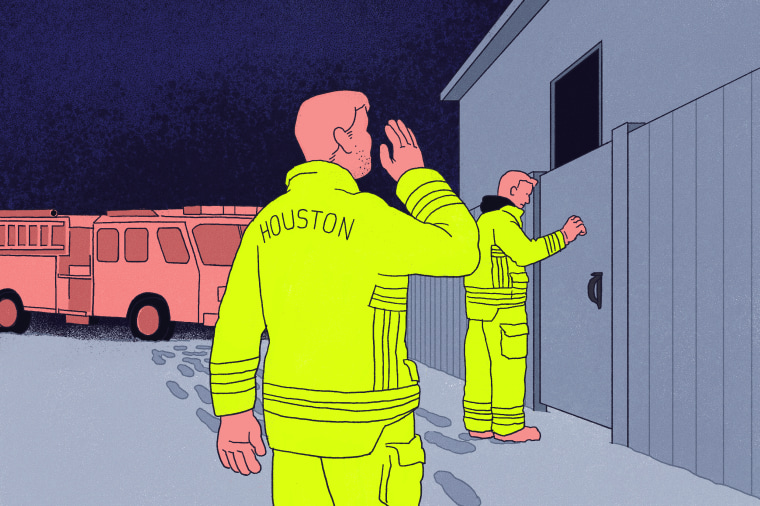This article was published in partnership with ProPublica, a nonprofit newsroom that investigates abuses of power, and The Texas Tribune, a nonprofit, nonpartisan local newsroom that informs and engages with Texans. Sign up to receive ProPublica's biggest stories as soon as they’re published, and sign up for The Brief Weekly to get up to speed on essential coverage of Texas issues.
HOUSTON — It was 9:08 p.m. when Michael Negussie’s phone rang. Twenty minutes had passed since he called 911 asking for emergency crews to check on his cousins and their two children, fearing that they had fainted from carbon monoxide poisoning in their Houston home during a massive winter storm.
A fire captain at the dispatch center told Negussie that an emergency crew had arrived at the two-story town house. But, he said, no one was answering the door.
“It’s one of those things, if they get there and they have to force entry, they’re going to break the door, displace the lock,” the captain said, according to a recording of the 911 call.
Negussie was baffled. Why would emergency responders expect someone to come to the door if the reason for the call was that the family was unconscious?
“Yeah, that’s fine. Do that as soon as possible,” Negussie, 21, responded, trying to convey the urgency. “We think that they might have inhaled carbon monoxide in the garage.”
At any other time, Negussie would have driven the 24 miles from his home in Pearland, Texas, to his cousins’ southwest Houston neighborhood. But local government officials had urged Texans not to travel the ice-coated roads on this frigid Feb. 15 evening, concerned that they would endanger themselves and first responders.
So Negussie and his parents put their faith in the emergency responders who had arrived at their cousins’ home. As the fire crew waited for more information about why the family was not answering the door, the captain at the dispatch center asked Negussie what made him believe his relatives had inhaled carbon monoxide.
The power was out, Negussie explained. Their car, he had learned from someone who had spoken with the family earlier in the day, was running in the attached garage so they could charge their phones.
“All right, well, we have units out there. I’ll let them know. I’ll make a tactical decision on that incident, and I’ll get HPD out there,” the captain said, referring to the Houston Police Department, which often assists when emergency responders must force entry into a home.
“And you’ll keep us updated?” Negussie started to ask. The fire captain hung up before he could finish.
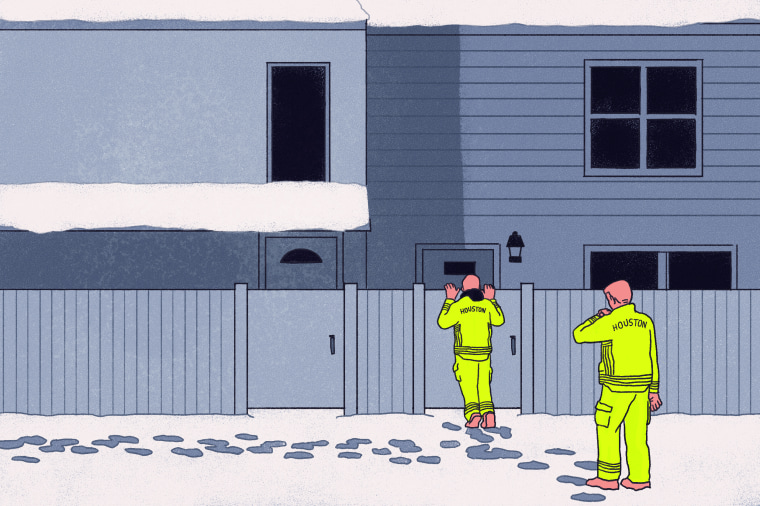
Less than five minutes later, the fire crew was gone. The four family members, who had already spent hours unconscious, were left unattended and exposed to the lethal, invisible gas for nearly three more hours, according to documents from the Houston fire and police departments and recordings of 911 calls obtained by ProPublica, The Texas Tribune and NBC News. An operator at the dispatch center didn’t share the crucial details about Negussie’s carbon monoxide concerns with the crew at the scene, according to records and interviews with fire department officials. Police officers never arrived. Neither the Houston Police Department nor the city’s emergency center could find any records indicating the fire captain requested assistance.
When emergency responders returned to the home near midnight, after Negussie called 911 again, they found Etenesh Mersha, 46, and her 7-year-old daughter, Rakaeb, dead. Her husband, Shalemu Bekele, and their 8-year-old son, Beimnet, were lying on the floor, still breathing. They were rushed to the hospital. Bekele spent days recovering. Beimnet was in the hospital for nearly a month.
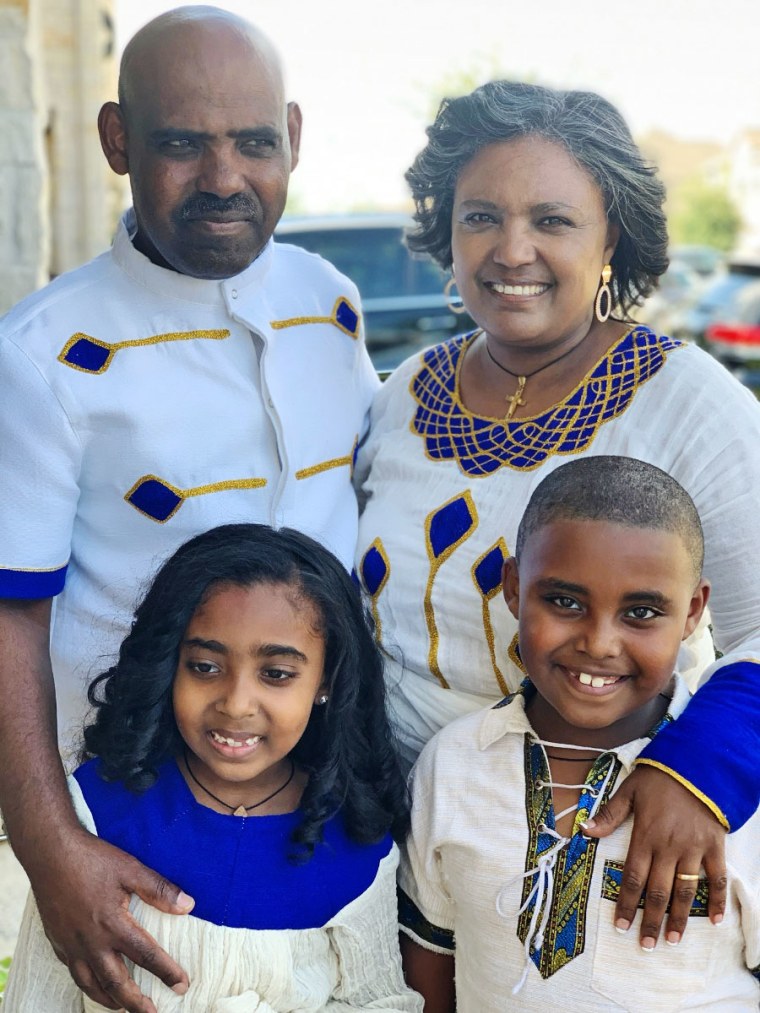
An investigation by ProPublica, The Texas Tribune and NBC News in April told the story of Bekele and Mersha's family and some of the hundreds of others across the state who turned on gas stoves, lit barbecue grills indoors or ran their cars in enclosed spaces in an attempt to stay warm after they lost power during the unprecedented weeklong storm.
The investigation revealed that the state’s failure to regulate the power grid and repeated inaction by lawmakers on legislation that would have required carbon monoxide detectors in homes had contributed to the worst carbon monoxide poisoning disaster in recent history. More than 1,400 people were treated in hospitals across the state that week after being poisoned by the gas. Mersha and Rakaeb were among at least 17 who died.
After the investigation was published, the news organizations obtained nine 911 call recordings and police and fire department reports showing that the failures extended beyond the state’s inaction. Decisions made by Houston emergency responders to leave Bekele and Mersha’s home before making contact with the family, along with similar cases across the country, point to a need for policy changes to avoid such tragedies in the future, six emergency response experts told the news organizations.
In Houston and in many cities across the country, first responders have discretion to decide whether to force their way into a home based on what they see, the details they get from dispatchers and the perceived credibility of the information provided by the 911 caller.
That system clearly broke down in the case of Bekele and Mersha’s family, said Mike Thompson, a retired fire service battalion chief from Rapid City, South Dakota, who has 27 years of fire service and paramedic experience. Thompson said it is critical for first responders to get all of the information needed to make an informed decision about forcible entry, but he said emergency crews also should have been on high alert for carbon monoxide poisonings given the winter storm. That day alone, the Houston Fire Department responded to nearly 100 calls related to carbon monoxide, compared to a daily average of about seven in January.
The key consideration for first responders should be to ensure that the person is not in danger, said Thompson, a fire and medical expert with the International Academies of Emergency Dispatch. “You keep trying to make contact until you prove yourself wrong,” he said.
On July 23, more than a month after the news organizations began asking questions about the incident, the Houston Fire Department launched an investigation into the response to Negussie’s 911 calls. Citing the ongoing investigation, department officials declined interview requests for emergency responders and dispatchers involved in the case.
“What happened in this incident, it seems to me, because the investigation is still ongoing, is that the dispatcher just failed to provide the necessary information for the people on the scene to make the appropriate decision,” said Houston Fire Department Chief Samuel Peña. “The second response was handled as we normally expect, but they had the additional information that apparently the first crew did not.”
“A thorough review is underway and any breach of policy will be held to account,” Peña later added.
On that February evening, Peña had tweeted that the department was “stretched extremely thin.” He urged residents to stay safe around open fires and space heaters, ensure they had working carbon monoxide detectors in their homes and follow safe driving precautions.
But despite understanding the higher risk of carbon monoxide poisonings during the winter storm, Houston Fire Department officials disputed that they should have considered that possibility when determining whether to force entry into the home. Such decisions were not that simple given the volume and wide range of calls they were receiving, fire officials said.
“The incredible demand placed on the emergency response system (fire and police) from the thousands of emergency calls received that week was extremely taxing, but the Houston Fire Department worked tirelessly to address that demand,” Peña said in an email.
Growing frustration
Medical examiner records do not provide a time of death for Mersha and her daughter, showing only the time they were discovered lifeless in different parts of their home.
The car was still running when Bekele and Mersha were found in the garage. Rakaeb died in the home’s living room, while Beimnet was found unconscious in a utility closet connected to the garage.
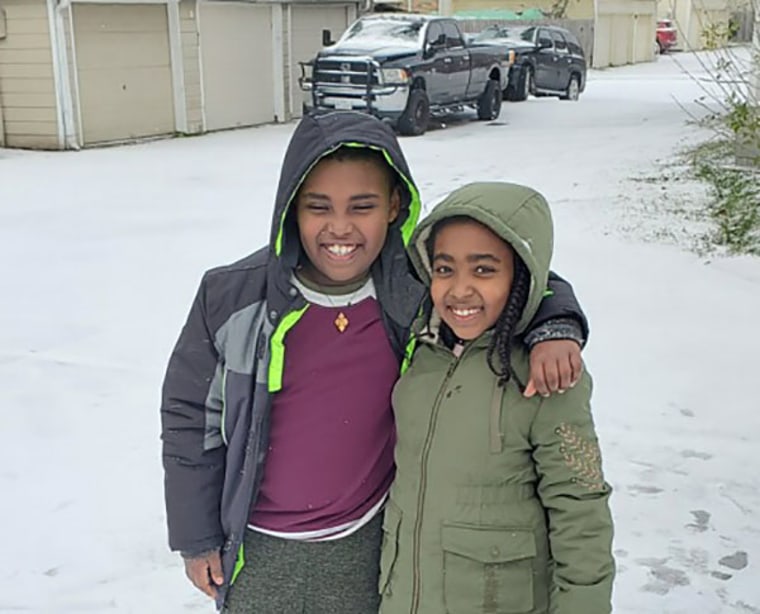
Given the available information, it is unclear why two members of the family died and two survived. But the outcome shows why it could have been crucial for the first emergency crew to enter the house, said Dr. Kelly Johnson-Arbor, co-medical director at the National Capital Poison Center and an expert in carbon monoxide poisoning.
“This is so unfortunate,” Johnson-Arbor said in an email. “Time can definitely make a huge difference in cases of CO poisoning. While it is not clear what time the victims actually died, it is certainly possible that earlier discovery could have saved their lives and/or resulted in less significant clinical outcomes for the surviving individuals.”
On the morning of Feb. 15, a friend in Colorado was on the phone with Mersha and Bekele’s family when they suddenly stopped responding. She and her husband called 911 in Houston but didn’t have the family’s address. Without it, dispatchers told them, there was nothing they could do.
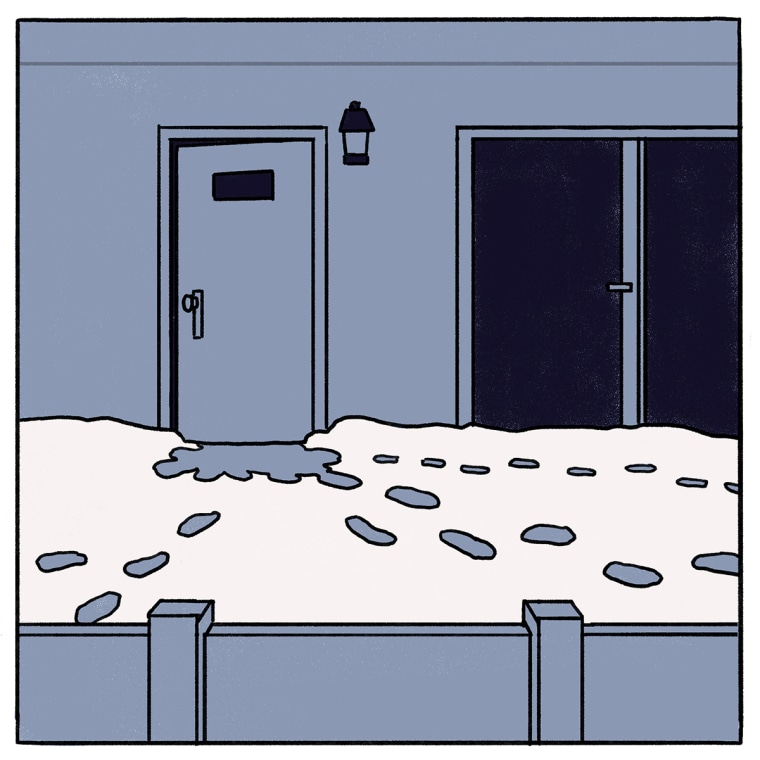
The couple spent the next nine hours frantically searching on social media for someone who could direct emergency responders to Bekele and Mersha’s home. Finally, they found Negussie's parents on Facebook and sent a message. "Please call me," one of them wrote. “Please call police or call me.”
As Ethiopian immigrants whose first language is Amharic, Negussie’s parents decided their college-educated son, a flawless English speaker, would call 911.
“My parents have been here for 20 years, and they understand the limitations the language barrier has on them, and they were not willing to take any risks in trying to save the lives of their family members,” Negussie said.
Bekele and Mersha had followed a similar path as Negussie’s parents, arriving from Ethiopia 10 years ago in search of a better life. Negussie recalls his family picking up their cousins at the airport and helping them navigate the complexities of a new country.
Eventually, the couple found work at a gas station. They had a son and then a daughter, and they saved their earnings to buy the three-bedroom town house where they planned to watch their children grow up.
The two families often shared tea and bread after church, a Sunday tradition, but they had missed services the previous day because of the weather.
The day of the storm, Negussie and his parents were huddled beneath a blanket in their home, which had lost power. As they waited to hear back from the fire department, they wrestled with whether to go to Bekele and Mersha's home to check on them and the children.
More than 2 1/2 hours after first calling 911, having heard nothing from authorities, Negussie called again at 11:20 p.m. The operator at first said she had no record that he’d called earlier. After Negussie pressed her, the operator found a record of the call in her log.

“So, is there an update? Did you make contact with the people inside the home?” Negussie asked, according to a recording. “I spoke with the fire department earlier. They said the truck was there for 15 minutes, but that’s all they could tell me.”
“That’s the same thing I can tell you,” the operator responded.
“I think there is some confusion as to what’s going on,” Negussie said, repeating his concerns that his cousins had fainted from carbon monoxide poisoning. “We do not know if the people we are calling for, the people we want a wellness check done, are well.”
Negussie was transferred. A different fire captain from the one he’d spoken with earlier that night said he didn’t know if the emergency medical services crew had made contact with the family.
The fire captain in the dispatch center said he would have to wait to ask the crew when it returned from emergency runs. But he said the department was “slammed” that night. He couldn’t tell Negussie how long it would take for fire crews to return. By the end of the day, crews had responded to more than 2,100 calls, nearly 90 calls an hour and double the department’s normal daily workload.
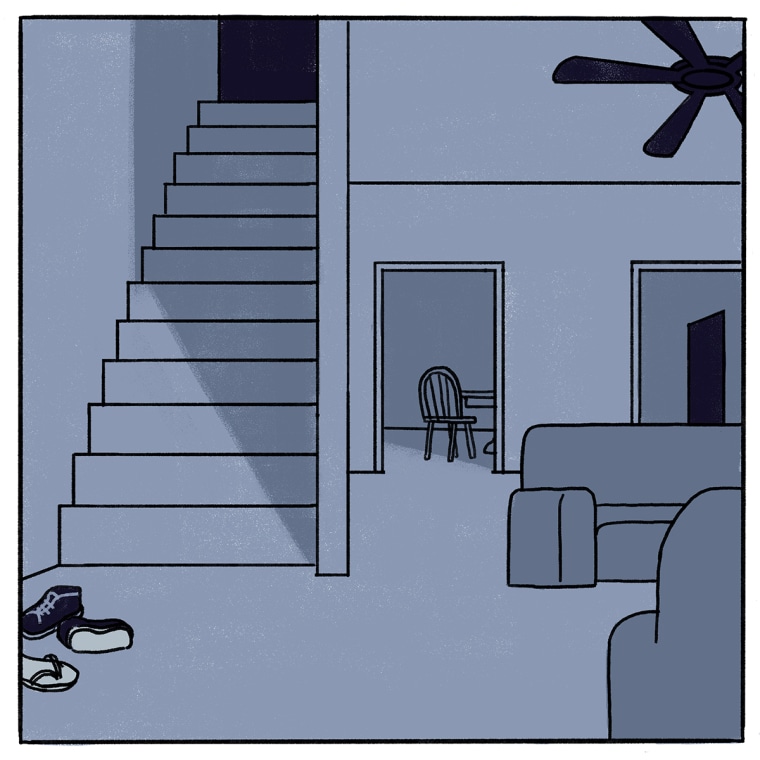
“So, we think that these people are on the floor right now as a result of carbon monoxide inhalation,” Negussie said for the third time. “Should we go and break through the window and figure it out ourselves? I’m asking you what we should do.”
The captain said he couldn’t advise Negussie to break into the house and suggested that he call 911 and start the process again.
“If you’re concerned that somebody is actually passed out, then I would suggest somebody go back out there and check,” the captain said.
'Disappeared overnight'
Negussie wonders what would have happened had emergency responders entered the home the first time.
He can’t listen to the 911 calls, he said after the news organizations shared the audio with him. They’re too painful.
“Regardless of how well I communicated the problem to the fire department, half of the family just disappeared overnight,” Negussie said.
At every turn, Negussie said, his family felt panic and fear. But mostly they questioned whether the fire department would have responded differently if his cousins’ family hadn’t lived in Sharpstown, a southwest Houston neighborhood that’s home to many immigrants and lower-income residents of color.
“The lack of urgency was because it was a Black family in that neighborhood, and the fire department and the police department didn’t feel that sense of urgency to do something — that there might be consequences if something went wrong,” Negussie said.
Fire officials disputed any suggestion that the response was different as a result of race and social class. “We don’t look at a geographical map and assign resources differently,” Executive Assistant Fire Chief Rodney West said. “Our expectation is to respond to every incident within so many minutes with the appropriate resources, and that’s what we do.”
The complex and unpredictable nature of calls asking emergency responders to enter a home without the consent of the residents requires discretion, fire and police experts said. And the decisions can be fraught with risk. Forced entry into homes has, in some cases, led to fatal shootings of both residents and emergency responders. First responders also risk angering residents whose properties are unnecessarily damaged.
But those complexities are all the more reason to establish policies and follow them, experts said.
“The situational bias and the human bias — that can sometimes get you in trouble,” said Thompson, the EMS consultant. “Protocols, process, procedures, policies, they are meant to kind of fill that in and make sure that the right thing happens.”
In response to a public records request, the Houston Fire Department initially said it did not have written policies governing forced entry. Justin Wells, a fire chief, said the department largely relies on professional development and “mentorship handed down from the officers to the younger members.” He said the department was having trouble finding a definitive document.
Fire department officials later shared a memo Wells issued to staff in 2018 that outlined the steps firefighters should take when they respond to medical emergencies in which no one answers the door.
The memo requires first responders to ensure that they are at the correct location, look for signs that someone is inside, check with neighbors and contact dispatch to ask for additional information from the caller.
If emergency crews decide to forcefully enter the home, they should call the police for support, the memo states. Officials said employees are required to read and abide by all laws and written directives, including memos.
“I think the decision first comes down to: Are we entering or are we not? Unless we see some cause like a fire, smoke, a woman or man, someone down inside the residence or hear calls for help, normally we are not going to enter the residence,” Wells said. “Once you have a reason to enter, it becomes ‘OK, how do I get in?’”
Based on the department’s experience, Wells said, many of the calls from a third party to check on someone else turn out to be false alarms, though the department did not provide figures. The caller, Wells added, is usually the “weakest link” because they either hang up or don’t provide enough information.
In this case, though, Negussie did everything right, said Bill Toon, a retired EMS provider with decades of experience across the country who reviewed the case records and 911 call recordings at the request of the news organizations.
“This was someone who said, ‘Hey, something’s not really right and I’m not immediately there to check on it, I need someone that I can rely upon to go do that,’” Toon said.
Absence of policies
Bekele is angry that the Houston Fire Department missed a potential opportunity to rescue his wife and daughter when Negussie first called 911.
But while he’s filed a lawsuit against nearly a dozen companies that supply power to the state’s electric grid, he has not pursued legal action against the fire department, which is shielded in most cases from personal injury or wrongful death lawsuits.
And he tries not to dwell on what went wrong, he said through an interpreter in April, focusing instead on his son. “I have to be strong for him,” he said.
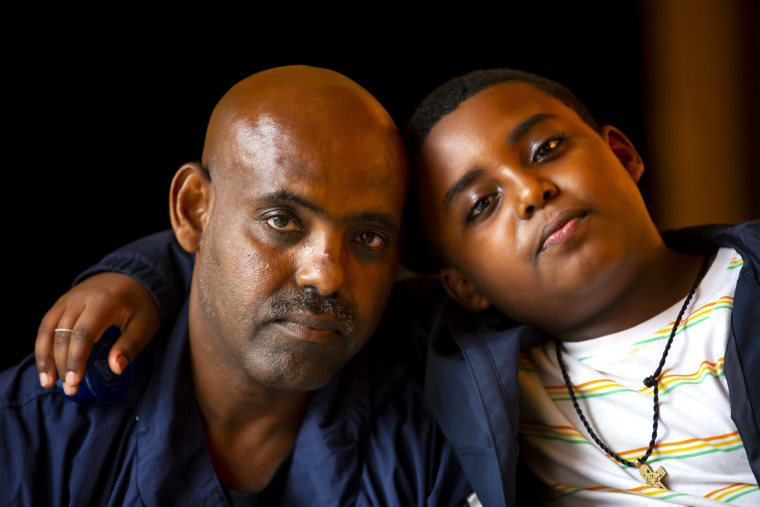
In other parts of the country, cases where first responders decided not to force entry into people’s homes have sparked not only investigations, but also lawsuits, including two cases in Illinois that reached the state Supreme Court. Those lawsuits argued that first responders were negligent or reckless by not going into a home after a call for help.
Shortly before 8 a.m. on April 24, 1995, in Chicago, a 28-year-old woman struggling to breathe called 911.
“I need help. I’m having an asthma attack. I think I’m going to die. Please hurry,” the woman told the operator, according to court documents. Chicago Fire Department paramedics arrived and knocked on her apartment door, but no one answered.
An emergency dispatcher then called the woman but got her answering machine. So the crew left.
That afternoon, the woman’s boyfriend found her lying lifeless on the floor. The family sued, alleging negligence and misconduct on the part of emergency responders who left without making contact with the woman. In the lawsuit, the family said that the door was unlocked and EMS crews had not tried to enter, in violation of their training. The city of Chicago and the paramedics said they were immune from liability and denied misconduct.
In August 2000, the Illinois Supreme Court ruled that the paramedics could be held liable for failing to locate a patient in need of emergency treatment. “If the paramedics had been following these vital and basic precepts of their training, as alleged, they would have found the victim inside the residence, and perhaps then they could have saved her life,” the court said in its ruling, sending the case back to a lower court to be reconsidered. The city of Chicago admitted no wrongdoing and ultimately settled the case in 2005 for $750,000.
In another Illinois case, a woman in Will County called 911 in 2008 saying she couldn’t breathe. An EMS crew that hadn’t been given that information looked through her windows but didn’t see anyone. When they started to leave, concerned neighbors tried to stop them, warning that the residents who lived in the home had health problems, according to a lawsuit later filed by the woman’s family. But first responders said they couldn’t break in without police.
About 30 minutes later, a second crew entered the house after neighbors called 911 again. The 58-year-old woman was later pronounced dead at a hospital.
The woman’s family sued, accusing the first responders and dispatchers of negligence and misconduct. The first responders said they were immune from liability and protected by the “public duty” rule in Illinois, which holds that local governments are only responsible for providing services like police or fire protection to the general public, not specific individuals.
The state Supreme Court heard the case and struck down the public duty rule, arguing that it was obsolete. The case was sent back to a lower court and was settled in 2016. Neither the government entities nor the individuals who were sued admitted wrongdoing. The settlement amount was not publicly disclosed.
Patrick Quane, a spokesperson for the Chicago Firefighters Union, said that while he was not aware of the cases, the Chicago Fire Department typically makes forcible entry when responding to medical calls where the person doesn’t answer the door, because the person could be in distress. The department also wants to avoid the potential liability of leaving the scene without ensuring that the person is safe, he said.

Final call
It was nearly midnight when emergency responders returned to Bekele and Mersha’s town house for the last time.
No one answered the door.
“It looks empty. Does the caller have any reason to believe somebody’s inside?” a firefighter asked the dispatcher.
Even though he had already told 911 operators and fire captains in six separate conversations that the family was unconscious, Negussie received yet another call at 12:04 a.m.
“Are y’all sure someone’s there?” a dispatcher asked.
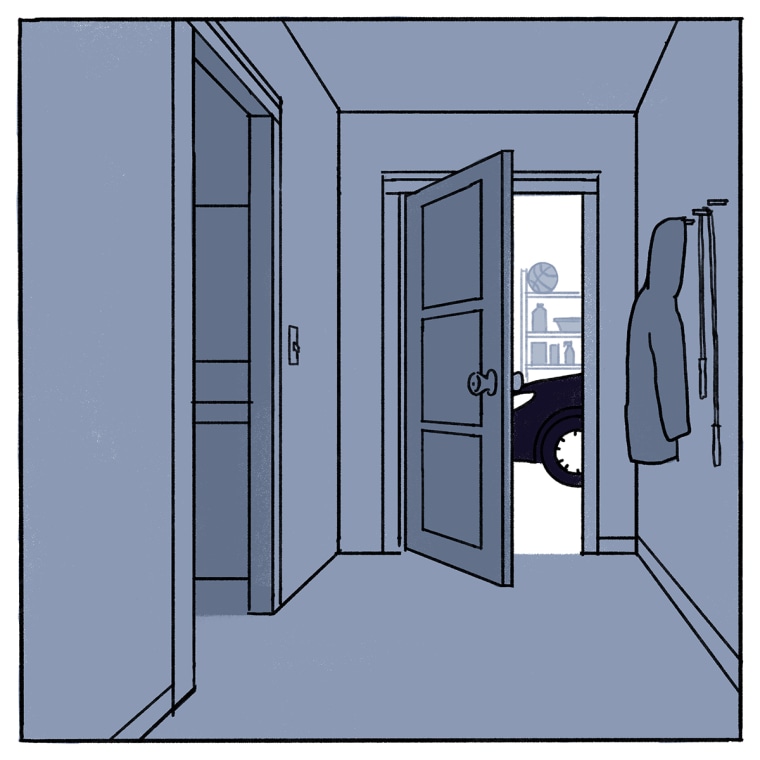
“We think that a family of two parents and two children is unconscious due to carbon monoxide inhalation,” Negussie said, repeating a line he had patiently tried to convey over nearly three excruciating hours.
The dispatcher relayed the information to the firefighters on the scene, who requested that the dispatcher call Houston police to force entry into the home.
But fire crews didn’t wait for the police to arrive. According to a Houston Police Department report, firefighters quickly entered through the front door.
It was unlocked.
Perla Trevizo and Mike Hixenbaugh reported from Houston; Suzy Khimm reported from Washington, D.C.; Lexi Churchill reported from Austin.
